

Ben Zachariah
Move over, Patrol: New-era Ford Maverick SUV imagined
10 Hours Ago
Rolls-Royce says it has completed around 40 per cent of the development for its all-electric Spectre two-door grand tourer.

Contributor
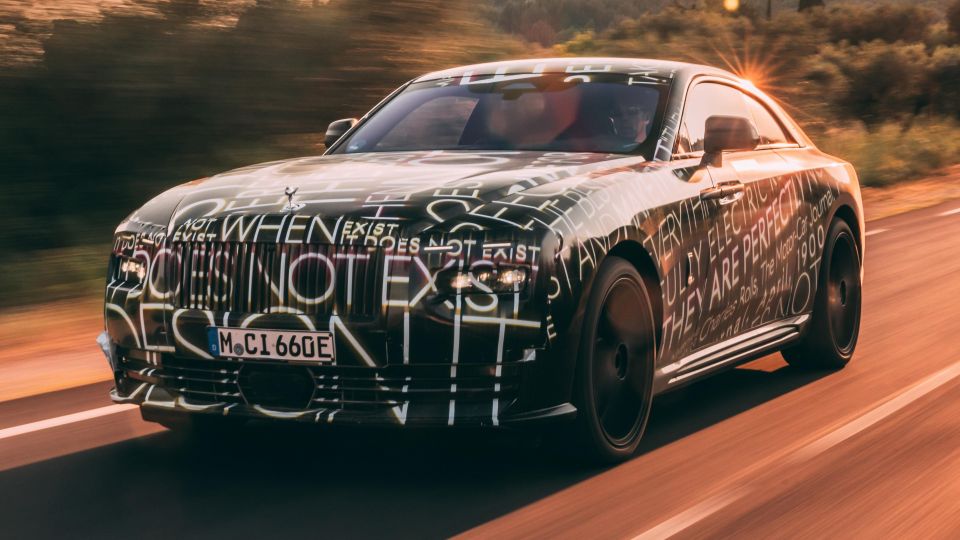

Contributor
It seems absolutely fitting that Rolls-Royce would test its upcoming all-electric Spectre grand tourer on the French Riviera.
After concluding winter testing in Sweden earlier in the year, Rolls-Royce is continuing its development program for the Spectre EV in Southern France ahead of launch in the fourth quarter of 2023.
The Rolls-Royce Spectre is the automaker’s first production electric vehicle (EV), and represents the start of Rolls-Royce’s transition to an electric-only range by 2030.
Said to be a spiritual successor to the Phantom Coupé, the Spectre two-door coupe is built on Rolls-Royce’s new aluminium ‘Architecture of Luxury’, which also underpins the current Phantom, Ghost and Cullinan.
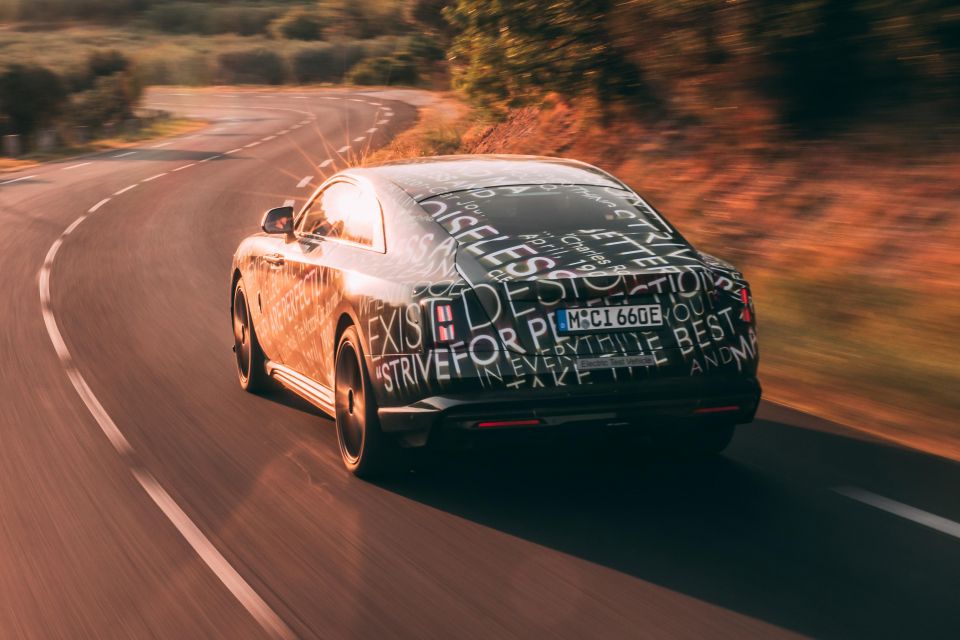
Rolls Royce says the Spectre is 30 per cent more rigid than its existing range of vehicles due to integrating the battery into the aluminium spaceframe architecture.
It also has pillarless coach doors that measure almost 1.5 metres long, which are the longest in Rolls-Royce history.
Rolls-Royce says a total of 625,000 kilometres will be driven on and around the French Côte d’Azur, forming a “crucial part” of the Spectre’s 2.5 million kilometre global testing program.
This second stage of development is split into two sections, with the first taking place at the Autodrome de Miramas proving ground.

During this first stage the Spectre will be tested on “demanding handling circuits with tight corners and adverse cambers”, as well as on a 5-kilometre high-speed bowl.
Rolls-Royce will also be testing and “refining” a new suspension technology for the Spectre which apparently ensures the all-electric grand tourer delivers the hallmark “magic carpet ride”.
The second stage consists of testing in the Provençal countryside surrounding the Autodrome de Miramas proving ground.
Rolls-Royce admits that “this region is enjoyed by many of the marque’s clients”.
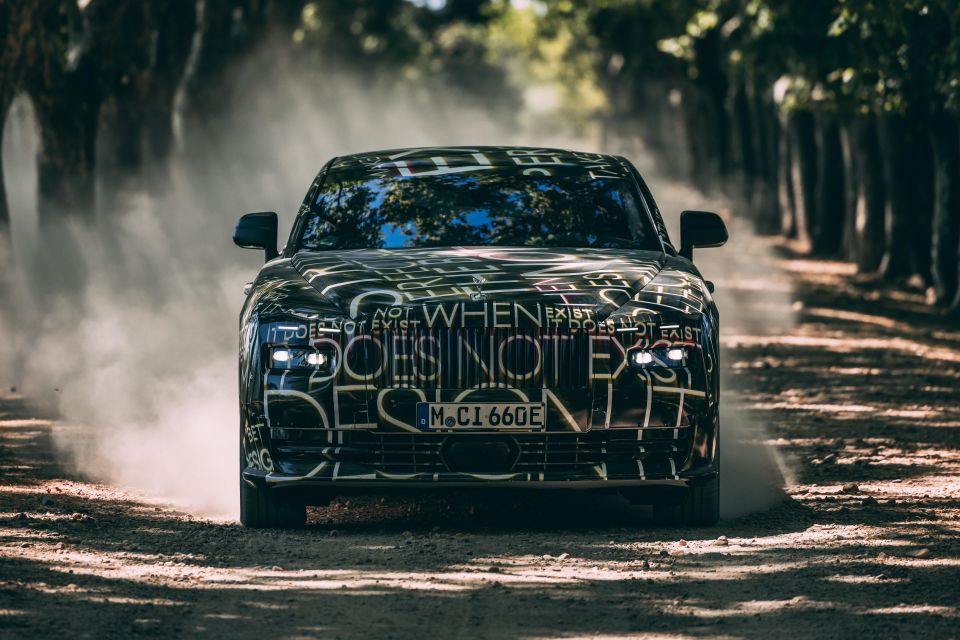
Following “rigorous” wind tunnel testing, digital modelling and high-speed testing, Rolls-Royce has reduced the drag co-efficient of the the Spectre to 0.25. It was previously 0.26.
This is also partially thanks to an aerodynamically-designed Spirit of Ecstasy bonnet ornament.
On the design front, the Spectre will feature a split headlight design that’s reminiscent of the Phantom Coupé. It’ll be the first Rolls-Royce to be fitted with 23-inch wheels since 1926.
Under the skin, the Spectre has a total of seven kilometres worth of cabling to connect and create more than 1000 electronic and powertrain functions with no centralised processing.

Rolls-Royce also says the Spectre has a “sophisticated” electronic roll stabilisation system that can decouple the anti-rollbars on straight roads, which prevents the rocking motion when a car hits an undulation.
When cornering on the other hand, the suspension dampers stiffen and the four-wheel steering system prepares to be activated.
Although Rolls-Royce Spectre won’t arrive until the fourth quarter of 2023, the company has already started taking deposits in Australia.
Rolls-Royce wouldn’t say how many deposits it has taken so far, as it traditionally doesn’t like to talk sales figures.

However, regional sales manager Ian Grant said in January 2021 there’s been a “pleasing” number.
Rolls-Royce is now embarking on its current journey to an all-electric future, but it’s no stranger to electric power.
Co-founder of the original Rolls-Royce Limited company, Charles Rolls, explored the possibilities of EVs back at the start of the 20th century.
“The electric car is perfectly noiseless and clean. There is no smell or vibration, and they should become very useful when fixed charging stations can be arranged,” said Mr Rolls in an interview with The Motor-Car Journal in April 1900.
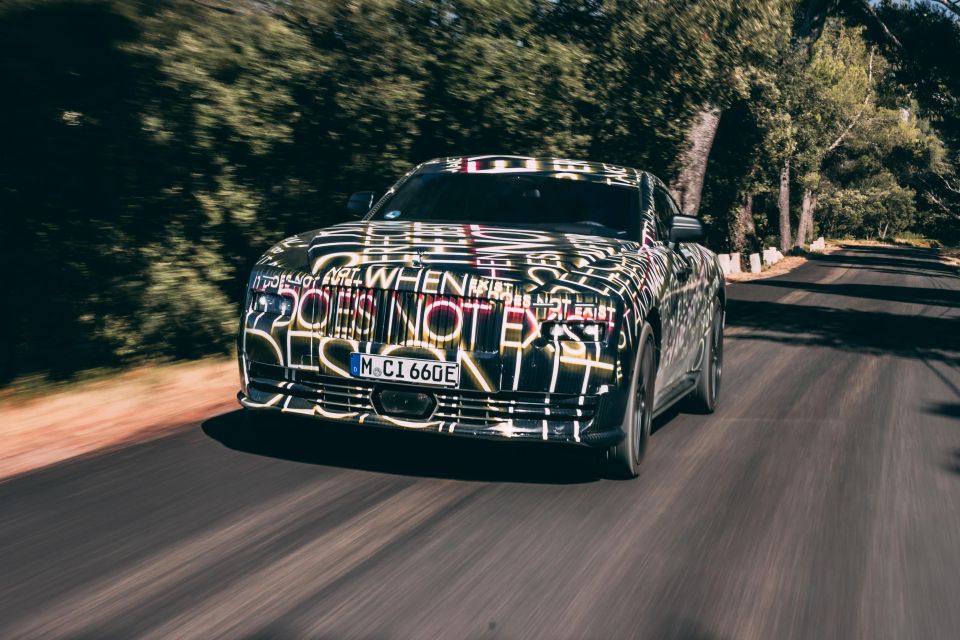
“But for now, I do not anticipate that they will be very serviceable – at least for many years to come.”
After decades of purely petrol power, Rolls-Royce explored EVs in 2011 with the Phantom Experimental Electric (aka 120EX), which was a fully-operational, road-legal prototype of an electric Phantom albeit one not intended for production.
Based on the contemporary Phantom, the 102EX had a pair of electric motors on the rear axle producing a total of 290kW of power and 800Nm of torque.
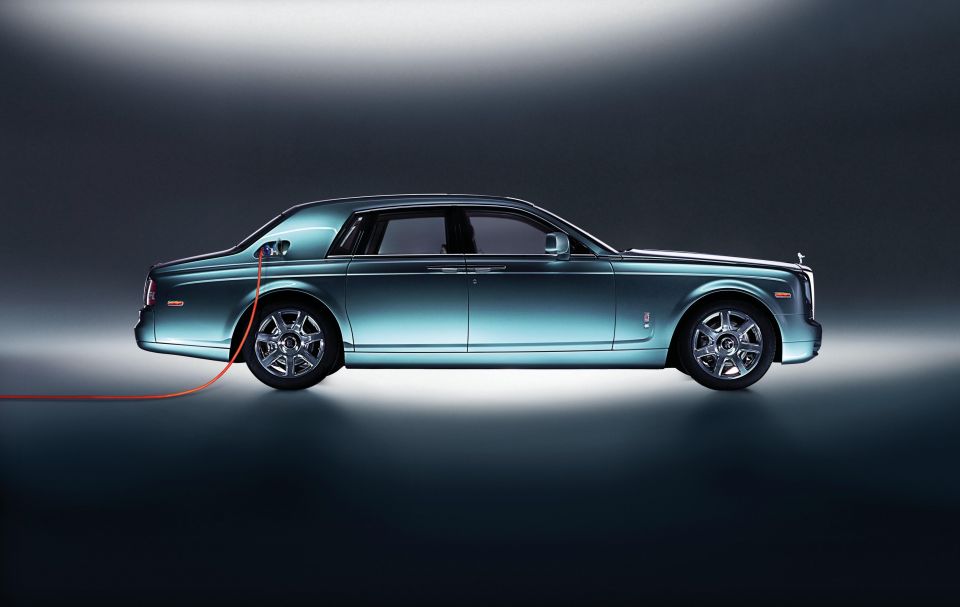
Its 0-60mph (0-97km/h) time was said to be under eight seconds, considerably slower than the V12 Phantom’s 5.7 second sprint.
Its biggest downside – and reportedly the reason development was stopped – was its range, at just 200km.
Rolls-Royce then debuted the Vision Next 100 (aka 130EX) concept car in 2016, again an experimental car powered by an electric powertrain albeit with a unique platform and autonomous driving technology.
Click an image to view the full gallery.
MORE: Rolls-Royce Spectre completes winter testing MORE: Rolls-Royce going electric-only by 2030, led by 2023 Spectre MORE: Rolls-Royce accepting deposits for electric Spectre in Australia
Where expert car reviews meet expert car buying – CarExpert gives you trusted advice, personalised service and real savings on your next new car.
Jack Quick is an automotive journalist based in Melbourne. Jack studied journalism and photography at Deakin University in Burwood, and previously represented the university in dance nationally. In his spare time, he loves to pump Charli XCX and play a bit of Grand Theft Auto. He’s also the proud owner of a blue, manual 2020 Suzuki Jimny.


Ben Zachariah
10 Hours Ago


Damion Smy
11 Hours Ago


Derek Fung
11 Hours Ago


Ben Zachariah
12 Hours Ago
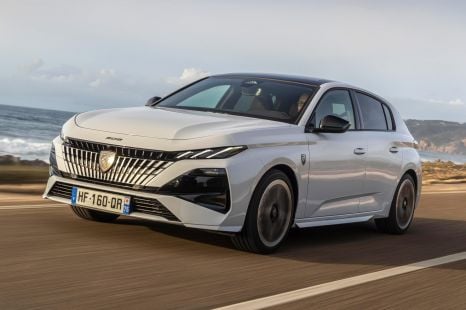

Matt Robinson
18 Hours Ago


CarExpert.com.au
1 Day Ago